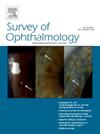The standard of care to treat small- and medium-sized macular holes (<400 µm diameter) consists of a conventional transconjunctival sutureless pars plana vitrectomy followed by ILM peeling and endotamponade, mainly with gas or in some cases with silicone oil, resulting in closure rates of over 90% and good functional results. Large (>400 µm diameter), chronic and persistent macular holes remain a surgical challenge since closure rates and functional results decrease with larger macular hole diameters. Various modifications of the conventional surgical technique were introduced to improve anatomic and functional success in refractory cases not suitable for conventional macular hole surgery. These techniques comprise the positioning of tissue at the top of the hole to improve closure as performed by an inner limiting membrane flap and free flap preparation or the transplantation of autologous retinal tissue, lens capsule or amniotic membrane. For the treatment of very large and persistent macular holes, the induction of a localized retinal detachment at the posterior pole by subretinal injection of balanced salt solution and a subsequent attenuation of the rim of the hole during fluid-air exchange has been suggested as a promising surgical technique. In particular, accurate patient education about the expected surgical outcome in this specific group of patients appears important.


